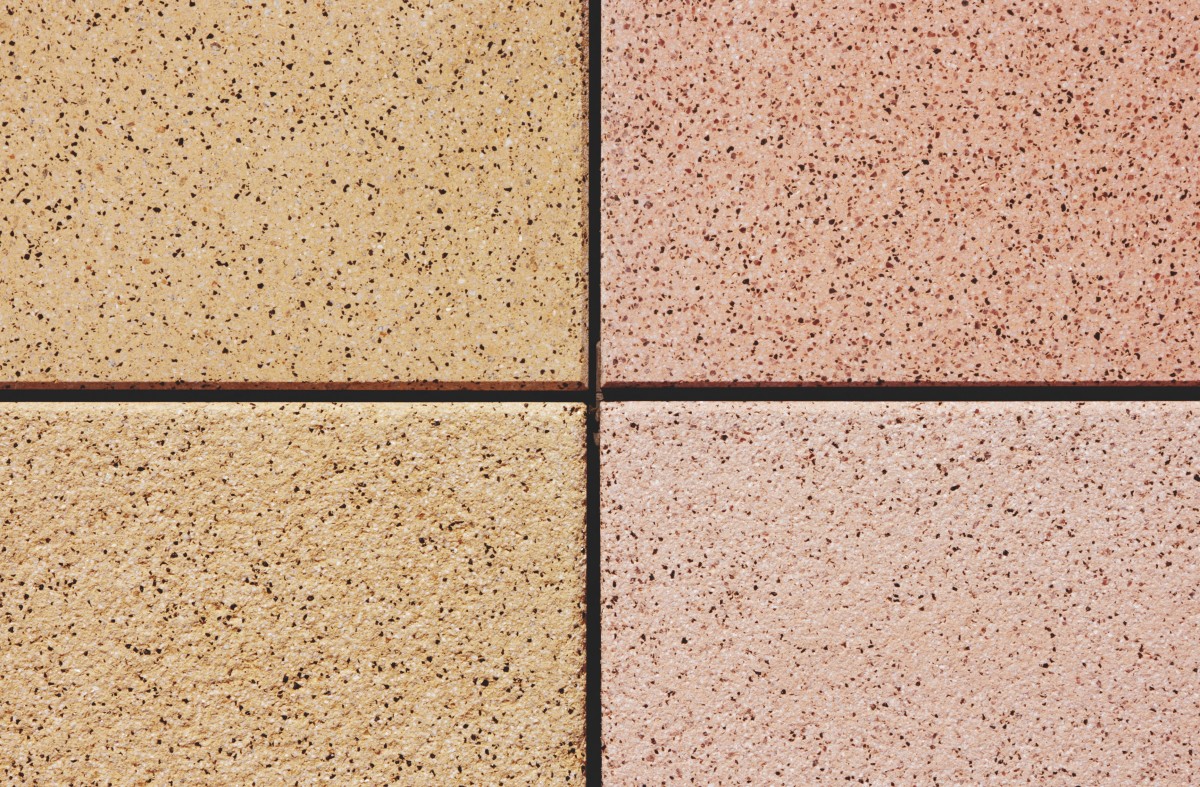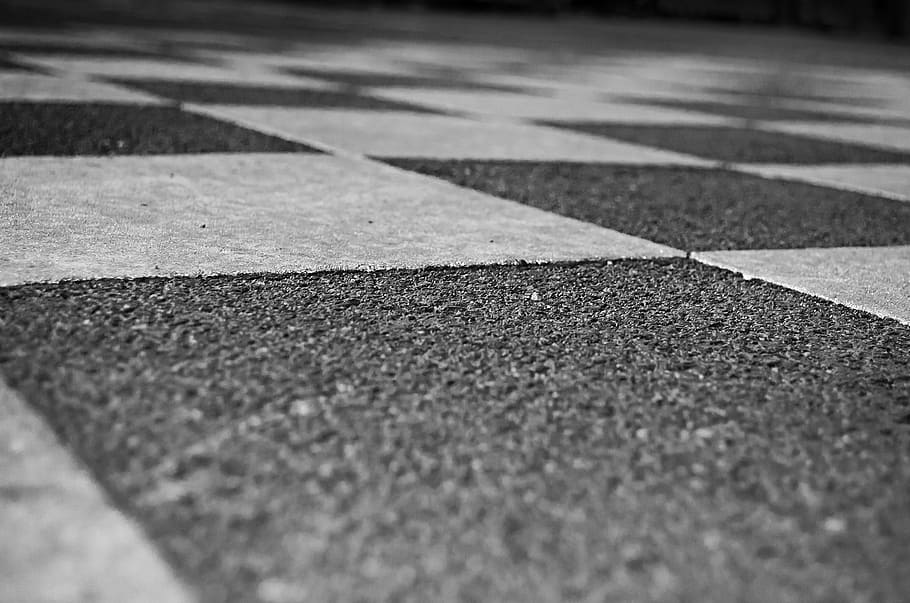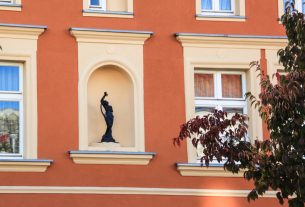Levelling a tiled floor consists of grounding the tiles on the floor of an entire room before laying a new covering on them, such as carpet, tile, linoleum…
– If only a few tiles are missing and the tile floor does not have any significant flatness defects, it is unnecessary to proceed with a levelling.
◦ Check that the tiles are securely fastened and re-glue them if necessary.
◦ Remove any broken or splintered tiles. Then fill joint spaces and holes with thin-set mortar.
– In the case of many missing tiles and significant defects in flatness, levelling is required.
Important:
-
Turn off the heating a day before levelling if the tiled floor is heated.
-
Turn off the radiators.
-
Do not apply patching mortar to a frozen floor. The floor temperature to be patched should be between 5 and 20°.
1. Before levelling the tile floor
How do you know if your tiled floor needs to be levelled?
Place a 2-meter ruler at different points on the floor. If the ruler’s and the floor’s gap never exceeds 7 mm, you do not need to level the floor. Simply fill the gaps (without tiles) with thin-set mortar and apply a primer.
Levelling is for floors with generalized irregularities over the entire surface greater than 7 mm.
Choose the right mortar to level your tiled floor
Depending on the unevenness of the floor, you can choose between self-levelling or levelling mortar:
Use self-levelling mortar for a floor with flatness defects of less than 1 cm.
– For a floor with significant unevenness (indentations greater than 2 cm), use a levelling mortar.
2. Clean the tiles
Before levelling the tiled floor, clean it:
– Scrape off any rough spots with a scraper or spatula.
– Use a vacuum cleaner to remove dust.
– Wash tiles with alkaline detergent to remove grease stains.
– Use a solvent and a cloth to remove glue and grease stains.
– If necessary, dry the floor with a fan heater.
– If the floor is damp, treat the cause of the dampness. Never scrape a wet floor.
3. Apply a primer
A bonding primer is a liquid that allows the levelling mortar to adhere to the tile. It is applied like a paint undercoat using a roller.
Apply the primer after cleaning the floor:
– Protect baseboards with tape.
– Apply the primer with a roller, starting on the side opposite the door and finishing at the door so you can walk out.
– Allow the primer to dry for the time indicated on the package.
Note: some primers are coloured when applied and turn white as they dry.
4. How do I prepare the levelling mortar?

Screed mortar is sold as a powder that must be mixed with water.
Two types of mortars are prepared in the same way: self-levelling and levelling mortar.
– Calculate the area of the room whose floor you will be patching; this will help you determine how much mortar you will need:
◦ self-levelling mortar is laid in layers of a few millimetres (between 3 and 30 mm);
◦ levelling mortar is laid in a 1 cm layer.
– In a mason bucket or trough, mix the water and levelling mortar according to the proportions indicated on the package.
– Use an electric mixer to make the mixture. You can also equip your drill with a whisk mixer. Set the mixer or drill to a low speed.
– Mix until you have a smooth, even mixture that is not too liquid.
– Allow the mixture to stand for two minutes before applying.
5. Pour the mortar on the tiled floor
When the mixture is ready and has settled, pour it onto the floor in successive areas.
Start on the side opposite the door and finish at the door so you can walk out.
Once you have poured the patching mortar, you need to spread it. The technique for applying the levelling mortar is different for self-levelling mortar and levelling mortar.
6. Case 1: Spreading the self-levelling mortar
Self-levelling mortar has the advantage of being self-spreading. It is prepared in the same way as a levelling mortar and is easier to apply.
Once you have poured the mortar on the tiled floor:
– Spread the mortar with a smoothing trowel, also called a “Flemish” trowel. The mortar spreads easily.
– Use broad strokes, left to right and right to left, to spread the mortar. Spread the mortar to a maximum thickness of 30 mm (average, 5 to 10 mm above the highest point).
– Let the mortar dry for half a day, ensuring that it is not exposed to drafts and heat.
– Wait 3 days before laying the floor covering.
Tip: If the surface shows slight unevenness after drying, sand the floor; if the unevenness is significant, apply a second layer of levelling mortar.
6. Case 2: Smoothing the levelling mortar
The levelling mortar is used to level a floor with hollows or major unevenness (deviations of more than 2 cm).
Once the levelling mortar is poured:
– Pull the mortar with a 2 m iron ruler to spread it out in a layer of about 1 cm. Move from right to left and left to right, pulling towards you.
– Once the mortar is spread, smooth it with a smoothing trowel.
– Let it dry for the time indicated on the package. Do not expose the mortar to drafts or heat.
– Flooring can be installed after 3 days.
Levelling mortar does not spread as easily as self-levelling mortar, so do not hesitate to apply two coats to a tiled floor with excessive defects. Allow the first coat to dry three hours before applying the second.
7. For a 2nd layer of levelling mortar
If you decide to apply a second layer of levelling mortar, allow the first layer to dry for 3 hours before applying the second.
To apply the second layer of levelling mortar
– Prepare the second layer of levelling mortar.
– Pour the second layer over the first.
– Pull with the iron rule to distribute the levelling mortar in a 1 cm layer. The two overlapping layers should not exceed 3 cm in thickness.
– Smooth with a smoothing trowel and let dry.
– Wait 3 days before laying the floor covering.
Materials for levelling a tiled floor
Levelling compound
Smoother
Drill with a mixing whip
Tackifier
Aluminum ruler 2 m
Roller
Mason’s bucket
Spatula



